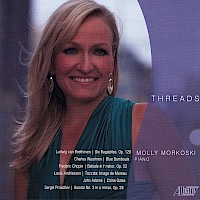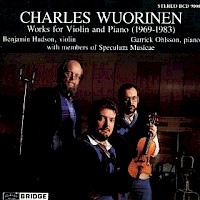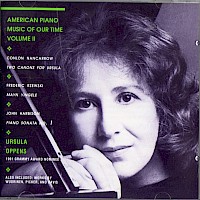The Blue Bamboula
- Instrumentation
- Pf
- Year
- 1980
- Duration
- 11:00
Ursula Oppens commissioned The Blue Bamboula in 1980, and I finished writing it that December. It is a rare performer indeed who will use her own resources for such a purpose, and my respect and gratitude for this self-sacrifice is exceeded only by my regard for her wonderful musicianship.
The Blue Bamboula is a single-movement piece in which I tried to respond to Oppens’ request that the work embody the spirit of an earlier work of mine, the Grand Bamboula of 1971, a 6-minute work for string orchestra which had originally been commissioned as a kind of overture; and I suppose that The Blue Bamboula — along with the earlier Bamboula’s extroverted spirit—also possesses something of the character of an overture. But because it is nearly twice as long as the string piece, it really fits anywhere in a concert program.
Self-revealing comments about one’s compositional methods, and program-note descriptions of the actions and unfoldings of pieces, strike me as usually more harmful than helpful. What I can say about The Blue Bamboula, though, is that while based on an ordered set like all my works, its surface is very far removed indeed from what journalists (and, I regret to say, some professionals) think of when they talk of something they call “twelve-tone music.”
The Blue Bamboula is part of series of pieces of similar titles, which have nothing in common beyond their names but a community of spirit. In addition to the two mentioned here, there is also Bamboula Squared (1984), for computer-generated tape and orchestra; and Bamboula Beach (1987), an overture with Cuban themes, written for Michael Tilson Thomas and the New World Symphony of Miami.
-CW
"Best of all was Mr. Wuorinen's work - wonderfully clever, fiendishly difficult romp, reckless and carefully at teh same time." Tim Page , New York Times
"The Wuorinen. a piece commissioned by Miss Oppens, finds the composer in very high spirits. It is-at least in mood-an extended kind of scherzo, full of unexpected flashes of color and movemnet, sudden outburts and veering changes of direction." Bernard Holland, New York Times
Recordings
-

The Blue Bamboula / Molly Morkoski
iTunes | Amazon -

Wuorinen: Piano Works / Alan Feinberg
Presto CD (U.K.) | Arkiv Music | Berkshire Record Outlet | Amazon -

Works for Violin and Piano
Spotify | Amazon | iTunes -

The Blue Bamboula / Ursula Oppens
iTunes | Amazon | Spotify
